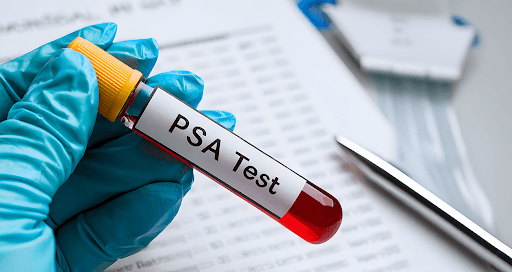
A glowing, even-toned skin is something many of us strive for, but for those dealing with hyperpigmentation, it can often feel out of reach. It could be due to anything, like the aftermath of a breakout, or due to years of sun exposure, or even hormonal changes. These stubborn dark patches can take a toll on both your skin and your confidence.
The good news is that you are not alone, and there are dermatologist-approved treatments that can help. With expert guidance and the right skincare approach, hyperpigmentation doesn’t have to be permanent. In this blog, we are going to delve into the different types of hyperpigmentation and, most importantly, the safest and most effective treatments recommended by skin specialists. The dermatology department of Amrita Hospital, Faridabad, is here to help your skin get back to its most radiant self.
What is Hyperpigmentation?
Hyperpigmentation is a common dermatological concern characterised by the darkening of the skin due to excess melanin production. It can affect individuals of all skin types and tones, and while it is typically harmless, it often becomes a concern for many.
In recent years, the cases of hyperpigmentation have soared significantly due to a combination of environmental and physiological factors. They include prolonged sun exposure, urban pollution, hormonal fluctuations, certain medications, and underlying medical conditions. These factors can trigger or exacerbate pigmentary disorders, impacting skin appearance and overall dermatologic health.
Understanding the root causes of hyperpigmentation is essential for selecting effective treatment strategies. From topical agents and laser therapy to preventive care, we’ll explore the science-backed options that can help restore an even, healthy skin tone.
What Causes Hyperpigmentation?
As mentioned above, hyperpigmentation can result from a complex interplay of internal and external factors that influence melanin production in the skin. Melanin is the natural pigment responsible for skin, hair, and eye colour. When melanin is overproduced or unevenly distributed, it can result in patches or spots of darker skin. This condition is called hyperpigmentation.
Below are the most common and clinically recognised causes of hyperpigmentation;
Sun Exposure
Ultraviolet (UV) radiation from the sun is one of the primary external triggers of hyperpigmentation. UV rays stimulate melanocytes (melanin-producing cells) to produce excess pigment as a defence mechanism.
Prolonged or unprotected exposure to sunlight can lead to sunspots (solar lentigines), freckles, and worsening of pre-existing pigmentation disorders such as melasma and post-inflammatory hyperpigmentation (PIH).
Genetic Predisposition
Some people inherit a greater tendency towards pigmentation irregularities. People with darker skin tones (Fitzpatrick skin types IV–VI) naturally have more active melanocytes and are more susceptible to hyperpigmentation following inflammation or trauma. Just like in the case of freckles, which are largely hereditary and have a tendency to become more pronounced with sun exposure.
Hormonal Fluctuations
Endocrine changes, especially the ones that involve oestrogen and progesterone, can stimulate melanocyte activity, which leads to a condition called melasma. This is particularly common in pregnant individuals (known as “the mask of pregnancy”), those undergoing hormone replacement therapy, or users of oral contraceptive pills. Melasma typically appears as symmetrical patches on the cheeks, upper lip and forehead.
Medications and Photo-sensitising Agents
Certain medications are known to increase skin sensitivity to sunlight or cause direct pigmentary changes. These include:
- Antibiotics (e.g., tetracyclines)
- Non-steroidal anti-inflammatory drugs( NSAIDs)
- Chemotherapeutic agents
- Pyschotropic medications
- Antimalarials
Photosensitising drugs can induce drug-induced hyperpigmentation or worsen existing pigment disorders when combined with UV exposure.
Heavy Metal Exposure
Prolonged contact or ingestion of heavy metals such as iron, arsenic, lead, or gold can cause systemic or localised pigmentation. This may present as greyish or bluish discolouration of the skin and mucous membranes, particularly in people working in certain industrial environments.
Use of Oral Contraceptives
Hormonal contraceptives might lead to pigmentation issues in predisposed individuals, especially when combined with excessive exposure to the sun. This could trigger melasma or cause subtle pigmentary changes over time.
Tobacco Smoke and Oxidative Stress
Tobacco smoke contains reactive oxygen species (ROS) that increase oxidative stress in the skin. This damages skin cells and triggers melanocyte activity, which results in dullness, uneven tone, and pigment irregularities-often more pronounced in long-term smokers.
Metabolic and Endocrine Disorders
Underlying systemic conditions such as diabetes mellitus, thyroid disorders, and polycystic ovarian syndrome (PCOS) can alter hormonal and metabolic balance, leading to secondary pigmentation changes. Conditions like acanthosis nigricans, often associated with insulin resistance, are classic examples.
Adrenal Insufficiency (Addison’s Disease)
In Addison’s disease, reduced cortisol levels will lead to increased secretion of adrenocorticotropic hormone (ACTH), which can cross-react with melanocortin receptors and stimulate melanin production. This results in diffuse skin darkening, especially around areas exposed to friction like elbows, knuckles, and mucosal surfaces.
Dermatologic Skin Conditions
Certain inflammatory skin disorders, such as acne, atopic dermatitis, eczema, and psoriasis, often lead to post-inflammatory hyperpigmentation (PIH) – a common type of pigmentation that develops after skin inflammation or trauma. PIH is especially prevalent among darker skin tones and can persist long after the primary lesion has healed.
Injury or Inflammation
Any injury that disrupts the epidermis, including cuts, burns, surgical scars, or even excessive friction, can trigger localised inflammation and subsequent melanin overproduction. This is why avoiding picking at acne or peeling scabs is critical, as these behaviours can worsen pigment deposition in healing skin.
Understanding the root cause of hyperpigmentation is essential for choosing the most appropriate treatment. Dermatologists often conduct a thorough history and examination, and sometimes recommend diagnostic tests to rule out underlying systemic conditions before initiating a targeted treatment plan.
Why Choose Dermatologist-Approved Treatments?
While home remedies are known to offer temporary relief, dermatologist-approved treatments are evidence-based, clinically tested and personalised to individual skin types and conditions. Dermatologists asses the root cause of the hyperpigmentation and often take a customised approach for more safer and effective results.
These professional treatments also reduce the risks associated with self-treatments, such as skin burns, scarring, or worsening of pigmentation, especially if one is dealing with sensitive or deeper skin tones.
Types of Hyperpigmentation
There are various types of hyperpigmentation according to skin science. Understanding the type of pigmentation you’re dealing with is crucial for choosing the treatment that fits you the best:
Melasma
Melasma usually appears as brown or gray-brown patches, mainly on the cheeks, forehead, nose, and chin. It is often triggered by hormones and sun exposure.
Sunspots (Solar Lentiginies)
These are flat, brown spots caused by long-term sun exposure, and they typically appear on the face, hands, and chest.
Post-Inflammatory Hyperpigmentation (PIH)
The postinflammatory hyperpigmentation, or PIH, are the dark spots that appear after an injury or inflammation, such as acne or eczema.
Freckles
Freckles are small brown spots that can darken with sun exposure and are often hereditary.
Dermatologist-Approved Treatments for Hyperpigmentation
Treating hyperpigmentation requires a strategic, evidence-based approach which is personalised to the underlying cause, skin type, and severity of the pigmentation. Dermatologist-approved treatment combines topical agents, in-clinic procedures, and advanced technologies to safely and effectively reduce melanin overproduction and restore an even skin tone.
Below are the most commonly prescribed and clinically backed treatment modalities used in dermatology practices:
Face Acids (Topical Exfoliating Agents)
Individuals with mild hyperpigmentation, uneven skin tone, or dull complexion are recommended to try this. Face acids help exfoliate the uppermost layers of skin, promoting cellular turnover and fading pigmentation cells over time.
Key Ingredients:
- Glycolic Acid (AHA): Stimulates exfoliation and collagen production.
- Salicylic Acid (BHA): Penetrates pores; ideal for PIH due to acne.
- Lactic Acid: Gentle exfoliant with moisturising benefits.
- Azelaic Acid: Antibacterial and anti-inflammatory; ideal for melasma and acne-related hyperpigmentation.
Caution:
Start slowly (2–3 times per week) and always combine with daily sunscreen to prevent photosensitivity.
Retinoids (Vitamin A Derivatives)
Individuals with moderate hyperpigmentation, melasma, and signs of photoaging are recommended to use retinoids. Retinoids accelerate skin cell turnover, inhibit melanin production, and promote collagen synthesis.
Types:
- Adapalene (available over the counter)
- Tretinoin (prescription-based, more potent)
Important Note:
May cause initial irritation or peeling. Dermatologists often recommend a gradual introduction and buffering with moisturisers.
Retinoids can also be combined with other topicals like hydroquinone or azelaic acid under supervision for better results
Chemical Peels
Patients with sunspots, melasma, and PIH who require deeper exfoliation than what topicals can offer are recommended to use chemical peels. Chemical solutions exfoliate the skin at varying depths, stimulating new skin growth and reducing pigmentation.
Common Peeling Agents:
- Alpha-Hydroxy Acids (e.g., Glycolic Acid)
- Trichloroacetic Acid (TCA)
- Jessner’s Solution
- Phenol (deep peels)
It is often performed by licensed dermatologists. .
Precautions:
Post-treatment care is essential to avoid rebound pigmentation. In darker skin tones (Fitzpatrick IV–VI), peels should only be done under dermatologic supervision to reduce the risk of post-treatment pigmentation.
Laser
Those with deeper, stubborn pigmentation and textural irregularities are recommended to try laser. Lasers break down excess melanin in deeper layers and help fade pigmentation over time.
Common Laser Types:
- Fractional CO₂ Laser (ablative)
- Erbium Laser
- Q-switched Nd: YAG Laser (non-ablative, safe for darker skin tones)
Provider:
Dermatologists or trained laser technicians in medical clinics.
Sessions:
Usually requires multiple sessions spaced 4–6 weeks apart.
Intense Pulsed Light Therapy (IPL)
Patients with sun-induced pigmentation, broken capillaries, and uneven tone. IPL emits broad-spectrum light that targets pigment and vascular lesions, fragmenting melanin for natural skin clearance.
Treatment Plan:
- Typically 3–6 sessions
- Minimal downtime
Note:
Best suited for fair to medium skin tones. It may not be recommended for darker skin tones due to the risk of burns or hypopigmentation.
Microdermabrasion
Individuals with superficial hyperpigmentation and rough skin texture are recommended to try Microdermabrasion. It is a non-invasive mechanical exfoliation that removes the stratum corneum (outermost skin layer) and promotes regeneration.
The several benefits of microdermabrasion include minimal discomfort, no downtime, and improved skin texture and radiance. However, it also has its limitations – it is more effective when combined with topical lightening agents or chemical peels for pigmentary concerns.
Lightening Creams
Patients with early-stage or mild pigmentation disorders are recommended to use lightening creams. These topical agents work by inhibiting melanin synthesis and dispersing existing pigment.
Key Ingredients:
- Hydroquinone (2–4%) – gold standard for melasma and PIH.
- Kojic Acid – natural tyrosinase inhibitor.
- Vitamin C (Ascorbic Acid) – antioxidant, brightening agent.
- Niacinamide – anti-inflammatory, blocks melanosome transfer.
Caution:
Hydroquinone use should be monitored and limited to avoid long-term adverse effects such as ochronosis. Always follow a dermatologist’s guidance.
How to Prevent Hyperpigmentation
Preventing hyperpigmentation is just as important as treating it, if not more so. Since hyperpigmentation often results from sun exposure, inflammation, or hormonal imbalances, a proactive skincare and lifestyle routine can help significantly reduce your risk. Dermatologists recommend the following preventive measures:
Wear a Broad-Spectrum Sunscreen Daily
Ultraviolet (UV) radiation is one of the primary triggers of melanin overproduction. Incidental exposure, like sitting near a window or stepping out for a few minutes, can also exacerbate existing pigmentation or cause new spots. Reapply sunscreen every 2–3 hours when outdoors.
Avoid Hitting the Sun during Peak Hours
The sun’s rays are most intense between 10 AM and 4 PM, increasing your risk of UV-induced pigmentation.
Use Protective Clothing and Accessories
Consider clothing and accessories that are protective and functional at the same time.
- Wide-brimmed hats to shield the face.
- UV-protective sunglasses to reduce pigmentation around the eyes.
- Long-sleeved clothing made of tightly woven fabrics.
- Consider UPF-rated garments for added sun protection.
Incorporate Anti-Inflammatory Skincare Ingredients
Inflammation, from acne, allergic reactions, or irritants, can stimulate melanocyte activity, leading to post-inflammatory hyperpigmentation (PIH). Topical agents like azelaic acid offer both anti-inflammatory and pigment-reducing benefits
Avoid Picking, Scratching, or Squeezing the Skin
Any injuries that your skin might be suffering from-like popping pimples ot scratching insect bites, tend to leave behind dark spots, especially for the melanin-rich skin types. Dermatologists suggest that if you’re prone to acne or eczema, seek early treatment to avoid any flare-ups that may lead to PIH.
Patch-Test New Skincare Products
Skin irritation or allergic reactions from harsh products can trigger inflammation and pigmentation. Just in case you’ve made up your mind about a new product, apply a small amount of it to your inner forearm or jawline and monitor for 24-48 hours.
Maintain Hormonal Balance
Fluctuations in estrogen and progesterone can cause melasma or worsen pigmentation. Consult your gynaecologist or endocrinologist if you notice pigmentation linked to menstrual irregularities, pregnancy, or oral contraceptive use. Even certain factors like lifestyle change, regular sleep, stress management, and a balanced diet can support your hormonal health.
Why Cover Hyperpigmentation When You Can Treat It
Hyperpigmentation is one of the most common yet complex dermatological concerns affecting people of all skin types and ages. While it does not pose a direct health risk, its impact on self-esteem, skin appearance, and overall confidence can be significant. Fortunately, we live in times where advances in technology have made it easier to effectively manage and reduce hyperpigmentation through a combination of clinically approved treatments and preventive care.
From topical therapies and chemical peels to advanced laser procedures, the treatment approach must be personalised, taking into account your skin tone, the root cause of pigmentation, and overall skin health. It is essential to avoid self-diagnosis or over-the-counter solutions without proper guidance, as inappropriate treatments can worsen pigmentation or lead to further skin damage.
Consistency, professional evaluation, and a tailored skincare regimen are the cornerstones of successful hyperpigmentation management. Early intervention often results in faster, safer outcomes.
Book your consultation with the expert dermatology team at Amrita Hospital, Faridabad and take the first step toward healthy, even-toned, and radiant skin.
Your skin deserves expert care, so why wait when you have access to the best professional dermatologists?







